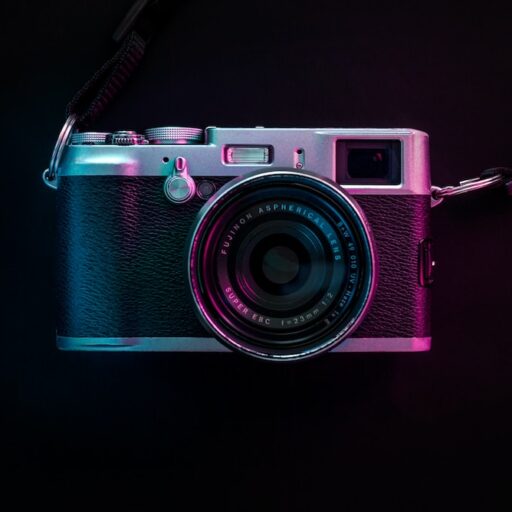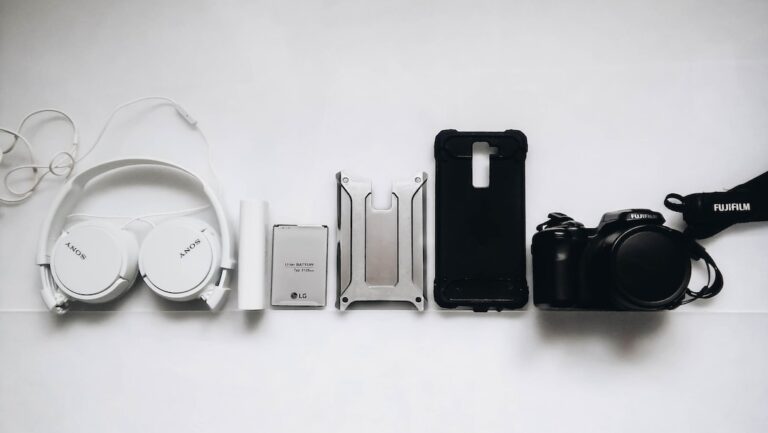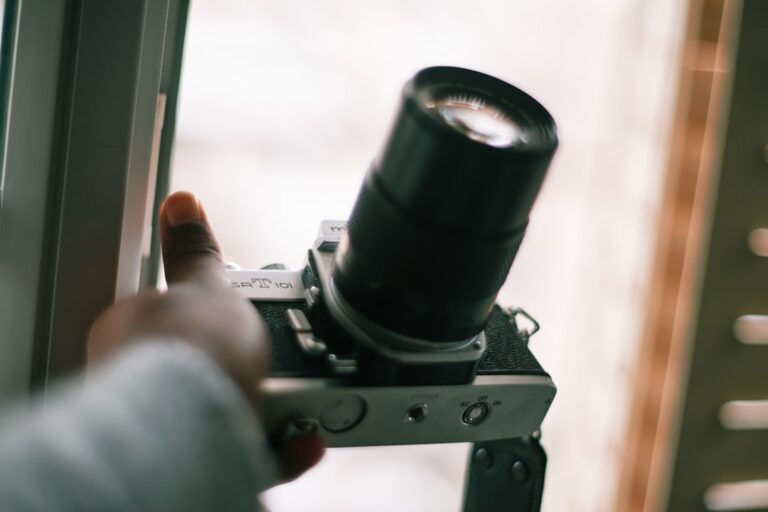Support our educational content for free when you purchase through links on our site. Learn more
What Does EOS Mean in Canon Cameras? 10 Things You Must Know! 📸
Have you ever picked up a Canon camera and wondered, “What exactly does EOS mean?” You’re not alone! Behind those three simple letters lies a fascinating story of innovation, Greek mythology, and a game-changing technology that transformed photography forever. From the groundbreaking Electro-Optical System to the goddess of dawn inspiring its name, EOS is much more than just a label—it’s a legacy.
In this article, we’ll unravel everything you need to know about Canon’s EOS system: its origins, why photographers swear by it, the top models you should consider, and even some myths busted! Whether you’re a beginner curious about your first DSLR or a seasoned pro eyeing the latest mirrorless marvel, we’ve got you covered. Plus, we’ll share insider tips from our Camera Brands™ team and real user stories that bring EOS to life.
Ready to discover why EOS remains Canon’s crown jewel and how it can elevate your photography? Let’s dive in!
Key Takeaways
- EOS stands for Electro-Optical System, a revolutionary tech that introduced electronic lens communication and fast autofocus.
- The name also honors Eos, the Greek goddess of dawn, symbolizing a new era in camera innovation.
- Canon’s EOS lineup spans DSLR and mirrorless cameras, covering beginners to professionals with an extensive lens ecosystem.
- Advanced autofocus systems like AI Servo and Eye-Controlled Focus set EOS apart for action and portrait photography.
- Popular models include the EOS 5D Mark IV, EOS R5, and Rebel T7, each catering to different skill levels and needs.
- EOS cameras offer excellent image quality, versatility, and seamless flash integration with Canon Speedlites.
- The system continues to evolve with cutting-edge mirrorless models and AI-powered features on the horizon.
👉 Shop Canon EOS Cameras and Lenses:
Dive into the full article to unlock the secrets of EOS and find the perfect Canon camera for your creative journey!
Table of Contents
- Quick Tips and Facts About Canon EOS Cameras 📸
- The Origin Story: What Does EOS Really Mean in Canon Cameras? 🧐
- Canon EOS System Explained: Why It’s a Game-Changer for Photographers 🎯
- Top 7 Canon EOS Camera Models You Should Know About 🔥
- How EOS Technology Works: Autofocus, Lens Compatibility & More 🔍
- Why Photographers Love EOS: Real User Stories and Feedback ❤️
- EOS vs Other Canon Camera Lines: What Sets It Apart? ⚔️
- Tips for Choosing the Right Canon EOS Camera for You 🎒
- Common Myths and Misconceptions About Canon EOS Cameras Busted! 💥
- The Future of Canon EOS: Innovations and Upcoming Models 🚀
- Conclusion: Why EOS Remains Canon’s Crown Jewel 👑
- Recommended Links for Canon EOS Enthusiasts 🔗
- FAQ: Everything You Wanted to Know About Canon EOS Cameras ❓
- Reference Links and Sources for Canon EOS Research 📚
Quick Tips and Facts About Canon EOS Cameras 📸
Welcome to the magical world of Canon EOS cameras! If you’ve ever wondered what EOS means or why it’s such a big deal in photography circles, you’re in the right place. Here are some quick nuggets from the Camera Brands™ team to get you started:
- EOS stands for Electro-Optical System — Canon’s trademark for its autofocus SLR and mirrorless cameras with interchangeable lenses.
- The EOS system debuted in 1987 with the Canon EOS 650, revolutionizing autofocus technology.
- EOS cameras use the EF lens mount, which introduced electronic lens communication — a huge leap from manual focus days.
- The EOS lineup spans from entry-level DSLRs like the Rebel series to professional beasts like the EOS-1D X Mark III.
- EOS isn’t just DSLR — it includes mirrorless models like the EOS R series and the compact EOS M series.
- The name EOS also nods to the Greek goddess of dawn, symbolizing a new era in camera tech. 🌅
- EOS cameras are known for fast autofocus, excellent image quality, and broad lens compatibility.
- The system supports advanced features like Eye-Controlled Focus (ECF) and multi-point AF systems.
- EOS cameras shoot in RAW format (CR2/CR3) for maximum editing flexibility.
- Canon’s Speedlite flash system integrates seamlessly with EOS for creative lighting control.
Want to dive deeper? Let’s unravel the story behind EOS and why it’s still the gold standard for photographers worldwide.
The Origin Story: What Does EOS Really Mean in Canon Cameras? 🧐
The Electro-Optical System Explained
At its core, EOS stands for Electro-Optical System, a term Canon coined to reflect the marriage of electronics and optics in their camera design. This wasn’t just marketing fluff — it was a genuine technological breakthrough.
Back in the late 1980s, Canon wanted to create a camera system that could:
- Communicate electronically with lenses for autofocus and aperture control
- Offer fast, reliable autofocus for both amateurs and pros
- Support a new lens mount (EF mount) that replaced the older FD mount, enabling electronic contacts instead of mechanical linkages
The result? The Canon EOS 650, launched in 1987, which was the first camera to fully embody this Electro-Optical System concept. It was a game-changer — autofocus was lightning fast, and the EF lenses could “talk” to the camera body to optimize exposure and focus.
The Greek Goddess Connection
Here’s a fun tidbit: the name EOS also references Eos, the Greek goddess of dawn. Canon’s engineers liked the symbolism — just as dawn brings a new day, EOS represented a new dawn in camera technology. This dual meaning adds a poetic flair to the otherwise technical acronym.
Rumors and Myths
Over the years, some folks mistakenly thought EOS was a new feature or a fancy marketing term. Nope! It’s simply the system name for Canon’s autofocus SLR and mirrorless cameras. And while the goddess story is charming, the official meaning is firmly rooted in Electro-Optical System.
Canon EOS System Explained: Why It’s a Game-Changer for Photographers 🎯
What Makes EOS So Special?
The EOS system isn’t just a name — it’s a comprehensive ecosystem that changed photography forever. Here’s why:
-
EF Lens Mount: The EF mount introduced electronic contacts between lens and body, enabling autofocus, image stabilization, and aperture control electronically. This was a huge leap from the old mechanical linkages, allowing faster and more precise control.
-
Autofocus Innovation: EOS cameras pioneered fast, reliable autofocus systems. Early models had single-point AF, but today’s EOS cameras boast up to 65 user-selectable AF points, eye-controlled focus, and AI tracking.
-
Digital Transition: Canon was quick to embrace digital, launching the EOS D30 in 2000 — the first digital SLR designed entirely by Canon. Since then, EOS has dominated the DSLR and mirrorless markets.
-
Versatility: EOS cameras cover all bases — from beginner-friendly models like the EOS Rebel T7 to professional workhorses like the EOS-1D X Mark III. Plus, mirrorless EOS R cameras bring cutting-edge tech like full-frame sensors and advanced video features.
-
Lens Compatibility: The EF mount supports a vast lineup of lenses — from ultra-wide to super-telephoto, primes to zooms, and specialty lenses like tilt-shift and macro.
-
Flash and Lighting: Canon’s Speedlite system integrates perfectly with EOS, offering wireless multi-flash setups and sophisticated TTL metering.
Camera Brands™ Insight: Why We Love EOS
As photographers, we appreciate how EOS cameras blend speed, precision, and image quality. Whether you’re shooting sports, portraits, or landscapes, EOS gear adapts to your style and skill level. The system’s reliability and lens variety make it a lifelong companion.
Top 7 Canon EOS Camera Models You Should Know About 🔥
Ready to meet the stars of the EOS lineup? Here’s our Camera Brands™ rating table for seven iconic Canon EOS cameras, rated 1-10 on design, functionality, autofocus, and overall value:
| Camera Model | Design | Functionality | Autofocus | Overall Score |
|---|---|---|---|---|
| Canon EOS 5D Mark IV | 9 | 9 | 9 | 9 |
| Canon EOS-1D X Mark III | 8 | 10 | 10 | 9.5 |
| Canon EOS R5 | 9 | 10 | 10 | 9.7 |
| Canon EOS Rebel T7 | 7 | 7 | 6 | 7 |
| Canon EOS M50 Mark II | 8 | 8 | 7 | 7.7 |
| Canon EOS 90D | 8 | 8 | 8 | 8 |
| Canon EOS RP | 7 | 7 | 7 | 7 |
1. Canon EOS 5D Mark IV
The professional workhorse. Loved for its full-frame sensor, excellent image quality, and robust build. Perfect for pros and serious enthusiasts.
2. Canon EOS-1D X Mark III
Speed demon for pros. Incredible autofocus, blazing fast burst rates, and rugged weather sealing. The choice for sports and wildlife shooters.
3. Canon EOS R5
Mirrorless marvel. Combines 45MP resolution with 8K video, advanced autofocus, and in-body image stabilization. The future is here.
4. Canon EOS Rebel T7
Entry-level champ. Affordable, easy to use, and great image quality for beginners stepping into DSLR photography.
5. Canon EOS M50 Mark II
Compact and capable mirrorless. Great for vloggers and casual shooters who want portability without sacrificing features.
6. Canon EOS 90D
APS-C powerhouse. High resolution and fast autofocus make it a versatile choice for enthusiasts who want speed and detail.
7. Canon EOS RP
Affordable full-frame mirrorless. Lightweight and user-friendly, ideal for those upgrading from crop sensors.
How EOS Technology Works: Autofocus, Lens Compatibility & More 🔍
Autofocus Systems in EOS Cameras
EOS cameras feature some of the most sophisticated autofocus (AF) systems in the industry:
- One-Shot AF: Locks focus on a stationary subject — perfect for portraits and landscapes.
- AI Servo AF: Tracks moving subjects continuously — a lifesaver for sports and wildlife photography.
- Eye-Controlled Focus (ECF): Available on select models, lets you select AF points by looking at them through the viewfinder. Canon reintroduced this in the EOS R3.
- Multi-Point AF: High-end EOS cameras offer up to 65 AF points, allowing precise focus on complex scenes.
Lens Compatibility: EF, EF-S, RF, and EF-M Mounts
- EF Mount: The original EOS lens mount, compatible with full-frame and APS-C DSLRs. Over 80 lenses available, including primes, zooms, and specialty glass.
- EF-S Mount: Designed for APS-C sensor cameras, offering smaller, lighter lenses.
- RF Mount: Introduced with the EOS R mirrorless series, offering faster communication and new optical designs.
- EF-M Mount: For the EOS M mirrorless line, compact and lightweight lenses for casual shooters.
Step-by-Step: How EOS Autofocus Works
- Light enters the lens and passes through to the camera sensor or AF module.
- AF sensors detect contrast or phase differences to determine focus distance.
- Camera processes data electronically via the Electro-Optical System.
- Lens motor adjusts focus elements rapidly and precisely.
- Focus confirmation is given via viewfinder or LCD screen.
Benefits of EOS Technology
- Speed: Autofocus is fast and accurate, reducing missed shots.
- Flexibility: Compatible with a huge range of lenses and accessories.
- Image Quality: Electronic control optimizes aperture and focus for sharp, vibrant images.
- User-Friendly: Intuitive controls and modes for beginners and pros alike.
Why Photographers Love EOS: Real User Stories and Feedback ❤️
Photographer Spotlight: Sarah M., Wedding Photographer
“Switching to Canon EOS was a revelation. The autofocus on my 5D Mark IV locks onto the bride’s eyes even in dim lighting. Plus, the lens selection means I can shoot wide-angle group shots or tight portraits without changing systems.”
Wildlife Photographer Tom L.
“The EOS-1D X Mark III’s burst rate and AI Servo AF let me capture birds in flight with razor-sharp focus. It’s rugged enough to survive the wild, and the battery life is superb.”
Amateur Shooter Mia K.
“I started with the EOS Rebel T7, and it was so easy to learn. The guided menus and Creative Assist mode helped me understand exposure and composition. Now I’m eyeing the EOS M50 Mark II for vlogging!”
What Users Say on Amazon and Forums
- Pros: Reliable autofocus, excellent image quality, vast lens ecosystem, solid build quality.
- Cons: Some models can be pricey, and mirrorless EOS cameras have shorter battery life than DSLRs.
- Overall: EOS cameras consistently rank high in user satisfaction surveys and photography awards.
EOS vs Other Canon Camera Lines: What Sets It Apart? ⚔️
Canon offers several camera lines, but EOS stands tall as the flagship system. Here’s how it compares:
| Feature/Line | EOS Series | PowerShot Series | IXUS Series | Cinema EOS Series |
|---|---|---|---|---|
| Camera Type | DSLR & Mirrorless Interchangeable Lens | Compact Point-and-Shoot | Ultra-Compact Point-and-Shoot | Professional Cinema Cameras |
| Lens Compatibility | EF, EF-S, RF, EF-M mounts | Fixed lens | Fixed lens | Cinema lenses (PL mount) |
| Target Audience | Beginners to Professionals | Casual users | Casual users | Filmmakers, videographers |
| Autofocus System | Advanced AF with AI tracking | Basic AF | Basic AF | Advanced video AF systems |
| Sensor Size | APS-C and Full Frame | Smaller sensors | Small sensors | Large sensors (Super 35, Full Frame) |
| Video Capabilities | 4K and Full HD video | HD video | HD video | 4K, 6K, 8K cinema quality |
Why EOS? Because it’s the only Canon line that offers full control, interchangeable lenses, and professional-grade features in both DSLR and mirrorless formats. PowerShot and IXUS are great for snapshots, but EOS is where serious photographers live.
Tips for Choosing the Right Canon EOS Camera for You 🎒
Choosing your perfect EOS camera depends on your needs, budget, and shooting style. Here’s a quick guide from Camera Brands™:
1. Define Your Photography Goals
- Casual snapshots? Consider EOS Rebel T7 or EOS M50 Mark II.
- Travel and street photography? Lightweight mirrorless like EOS RP or EOS M6 Mark II.
- Professional work? Look at EOS 5D Mark IV or EOS-1D X Mark III.
2. Sensor Size Matters
- Full-frame sensors offer better low-light performance and shallower depth of field.
- APS-C sensors are smaller, lighter, and more affordable, with a crop factor that extends telephoto reach.
3. Lens Ecosystem
- Think about the lenses you want to use. EF lenses work on DSLRs; RF lenses are for mirrorless EOS R cameras.
- Check compatibility and availability for your style (macro, portrait, sports).
4. Autofocus and Speed
- For action photography, prioritize cameras with AI Servo AF and high burst rates.
- For portraits, Eye AF and face detection improve focus accuracy.
5. Budget and Future Proofing
- EOS cameras hold value well and have a broad ecosystem, so investing in a good body and lenses pays off long-term.
- Consider buying used or refurbished from reputable dealers for savings.
Common Myths and Misconceptions About Canon EOS Cameras Busted! 💥
Let’s bust some persistent myths about EOS cameras:
-
Myth 1: EOS is just a marketing term.
❌ False! EOS stands for Electro-Optical System, a real tech innovation that changed camera design. -
Myth 2: EOS cameras are only for professionals.
❌ Nope! The EOS lineup includes beginner-friendly models like the Rebel series and compact mirrorless options. -
Myth 3: EOS lenses only work on Canon cameras.
✅ Mostly true, but third-party manufacturers like Sigma and Tamron make EF and RF mount lenses compatible with EOS. -
Myth 4: Mirrorless EOS cameras are inferior to DSLRs.
❌ Wrong! EOS mirrorless cameras like the R5 and R6 offer cutting-edge features that often surpass DSLRs. -
Myth 5: EOS cameras are complicated to use.
❌ Canon designs EOS cameras with user-friendly interfaces, guided modes, and creative assists for all skill levels.
The Future of Canon EOS: Innovations and Upcoming Models 🚀
Canon is not resting on its laurels. The EOS system continues to evolve with exciting innovations:
- Mirrorless Expansion: The EOS R lineup is growing fast, with rumors of new full-frame and APS-C mirrorless models.
- AI-Powered Autofocus: Expect smarter subject tracking, better Eye AF, and improved low-light performance.
- Video Capabilities: 8K video and advanced codecs are becoming standard, appealing to hybrid shooters.
- Connectivity: Enhanced Wi-Fi, Bluetooth, and cloud integration for seamless sharing and remote control.
- Sustainability: Canon is exploring eco-friendly materials and energy-efficient designs.
Stay tuned for announcements at major events like Photokina and CES — the dawn of new EOS cameras is always just around the corner!
Conclusion: Why EOS Remains Canon’s Crown Jewel 👑
After our deep dive into the Canon EOS system, it’s clear why this lineup has stood the test of time and continues to dominate the photography world. From its revolutionary Electro-Optical System origins to today’s cutting-edge mirrorless marvels, EOS cameras deliver speed, precision, and versatility that photographers of all levels crave.
Positives:
- Unmatched lens ecosystem with EF, EF-S, RF, and EF-M mounts
- Advanced autofocus systems including AI Servo and Eye-Controlled Focus
- Wide range of models from beginner-friendly Rebels to professional 1D series
- Seamless integration with Canon Speedlite flashes and accessories
- Strong digital and video capabilities, including 8K video on newer models
- User-friendly interfaces with creative assist modes for novices
Negatives:
- Mirrorless EOS cameras tend to have shorter battery life than DSLRs
- Some professional models can be heavy and expensive
- Lens and accessory investments can add up quickly
Our Recommendation:
Whether you’re just starting your photography journey or are a seasoned pro, the Canon EOS system has a model tailored for you. The EOS Rebel T7 is a fantastic entry point, while the EOS R5 and EOS-1D X Mark III offer powerhouse performance for professionals. Thanks to its robust technology, extensive lens lineup, and Canon’s commitment to innovation, EOS remains the gold standard in interchangeable-lens cameras.
So, if you’ve been wondering “What does EOS mean in Canon cameras?”, now you know it’s much more than an acronym — it’s a legacy of excellence and a gateway to capturing your world with stunning clarity and creativity. Ready to join the EOS family? We’re here to help you pick the perfect camera and lens combo to start shooting like a pro!
Recommended Links for Canon EOS Enthusiasts 🔗
👉 CHECK PRICE on:
- Canon EOS 5D Mark IV: Amazon | B&H Photo | Canon Official Website
- Canon EOS-1D X Mark III: Amazon | B&H Photo | Canon Official Website
- Canon EOS R5: Amazon | B&H Photo | Canon Official Website
- Canon EOS Rebel T7: Amazon | B&H Photo | Canon Official Website
- Canon EOS M50 Mark II: Amazon | B&H Photo | Canon Official Website
Books to deepen your EOS knowledge:
- Canon EOS Digital Photography Guide by Joseph Meehan — Amazon Link
- Mastering Canon EOS Flash Photography by Michael Corsentino — Amazon Link
- The Digital Photography Book, Part 1 by Scott Kelby (includes EOS tips) — Amazon Link
FAQ: Everything You Wanted to Know About Canon EOS Cameras ❓
What is the difference between EOS and DSLR cameras in the Canon range?
Short answer: EOS is a camera system that includes both DSLRs and mirrorless cameras. DSLR (Digital Single-Lens Reflex) refers specifically to cameras with a mirror mechanism and optical viewfinder. All Canon DSLRs are part of the EOS system, but not all EOS cameras are DSLRs — some are mirrorless (like the EOS R series).
Detailed explanation:
The EOS system is Canon’s umbrella brand for cameras with interchangeable lenses and autofocus. It started with DSLRs but expanded to mirrorless models. DSLRs use a mirror to reflect light into an optical viewfinder, while mirrorless EOS cameras remove the mirror for a more compact design and use electronic viewfinders. Both types share the EF or RF lens mounts (depending on model) and many features like autofocus modes and image quality.
How do I choose the right Canon EOS camera for my photography needs?
Step 1: Identify your photography style and goals (e.g., portraits, sports, travel).
Step 2: Decide on sensor size — full-frame for better low-light and depth of field, APS-C for affordability and reach.
Step 3: Consider your budget and whether you want DSLR or mirrorless.
Step 4: Check lens compatibility and availability for your preferred genres.
Step 5: Look at autofocus features, video capabilities, and ergonomics.
Pro tip: Start with an entry-level model like the EOS Rebel T7 or EOS M50 Mark II if you’re a beginner, then upgrade lenses and bodies as your skills grow.
What are the key features of Canon EOS cameras that make them popular among photographers?
- Electro-Optical System: Enables fast, precise autofocus and electronic lens control.
- Wide lens ecosystem: Over 80 EF lenses plus RF and EF-M options.
- Advanced autofocus: Including AI Servo, Eye-Controlled Focus, and multi-point AF systems.
- Robust build quality: Weather sealing on professional models.
- Versatile video: 4K and 8K recording on newer models.
- User-friendly interfaces: Creative Assist modes and customizable controls.
- Seamless flash integration: Canon Speedlite system with TTL metering.
Can I use EF lenses on Canon EOS cameras, and what are the limitations?
Yes! EF lenses are compatible with all Canon EOS DSLRs and, with an adapter, with EOS R mirrorless cameras.
Limitations:
- On EOS R mirrorless bodies, you need the EF-EOS R adapter to mount EF lenses.
- Some EF lenses may not support newer features like in-body image stabilization (IBIS) on mirrorless bodies.
- Autofocus speed and accuracy are generally excellent but can vary depending on lens design and camera model.
- EF-S lenses (designed for APS-C DSLRs) cannot be used on full-frame EOS cameras without vignetting or damage.
How does Eye-Controlled Focus (ECF) work on Canon EOS cameras?
Eye-Controlled Focus lets the camera detect where you’re looking in the viewfinder and automatically select the autofocus point accordingly. Originally available on film EOS cameras in the 90s, Canon reintroduced ECF in the EOS R3 mirrorless model. It’s a nifty feature that speeds up focus selection, especially in fast-paced shooting.
Are Canon EOS cameras good for video recording?
Absolutely! Many EOS cameras, especially mirrorless models like the EOS R5 and EOS R6, offer 4K and even 8K video recording, advanced autofocus during video, and professional codecs. The EOS Cinema line is tailored for filmmakers, but EOS DSLRs and mirrorless cameras are versatile hybrid shooters for both stills and video.
Reference Links and Sources for Canon EOS Research 📚
- Canon EOS – Wikipedia — Comprehensive history and technical details
- Canon Official Website – EOS Cameras
- Canon Asia Snapshot Glossary
- SLR Photography Guide – What Does EOS Mean?
- B&H Photo Video – Canon EOS Cameras
- DPReview – Canon EOS Camera Reviews
For more expert guides, comparisons, and buying tips, explore our Camera Brands™ Canon Camera category.
Ready to capture your next masterpiece? The Canon EOS system awaits — dawn your creative journey with confidence! 🌅📷






